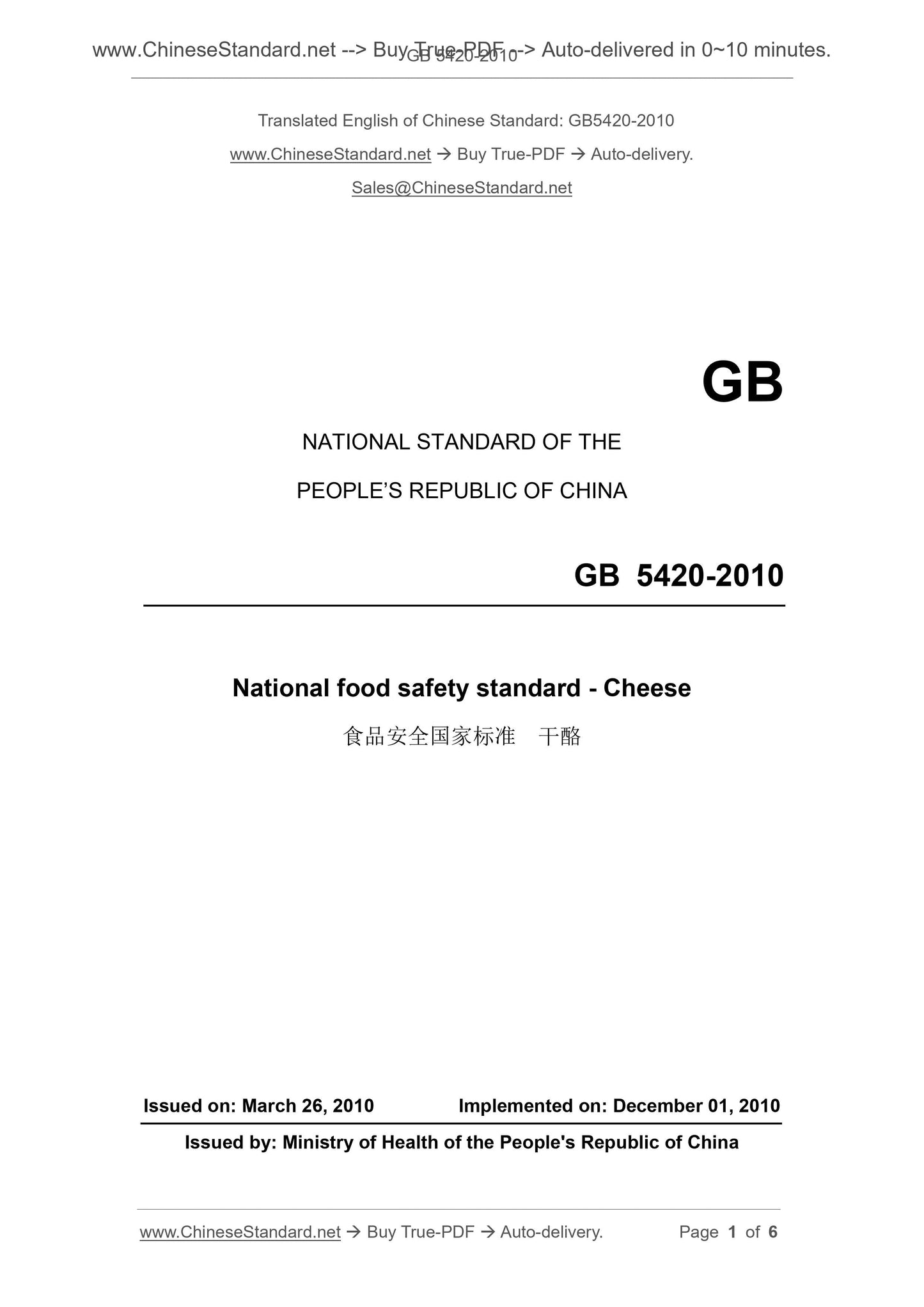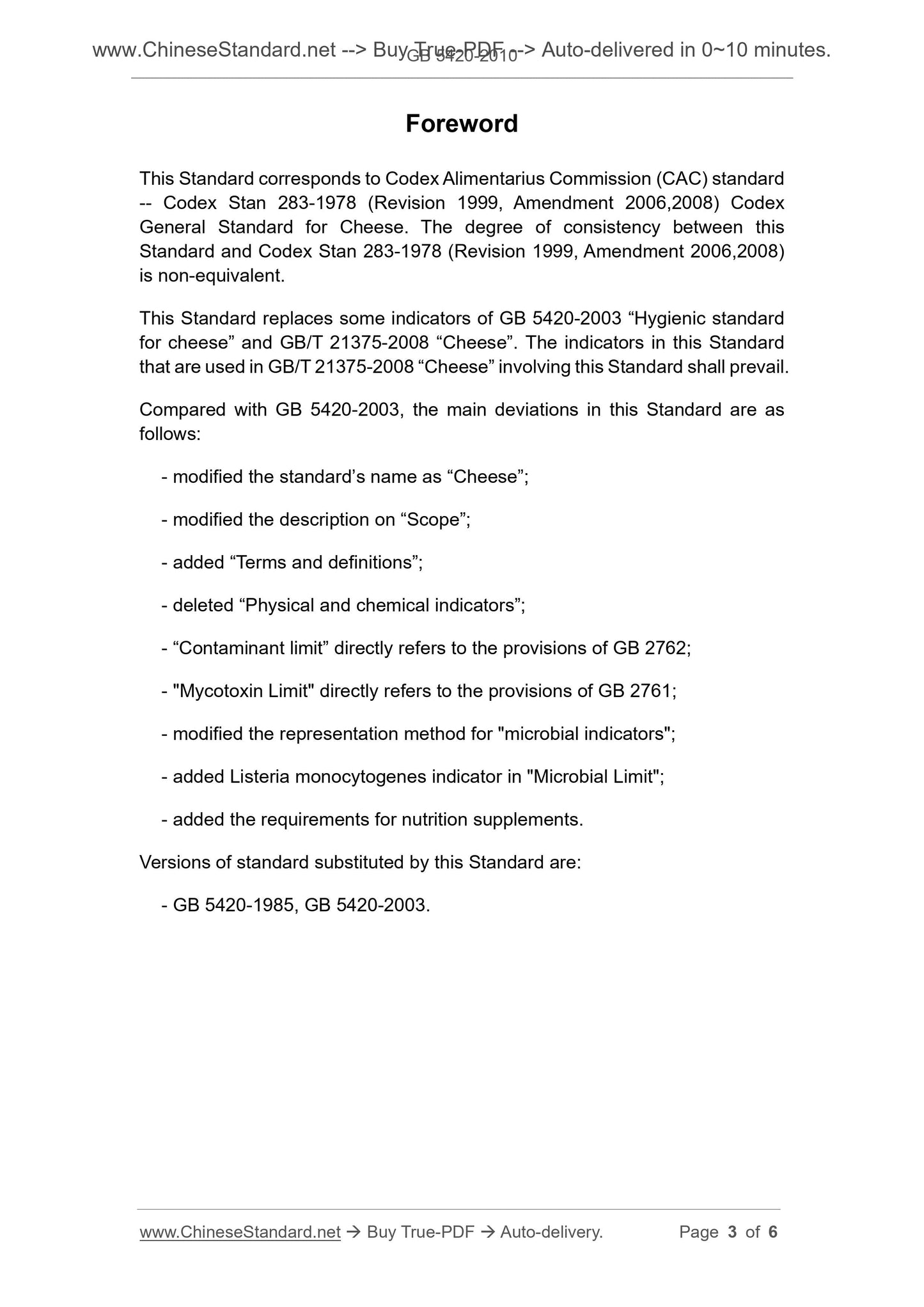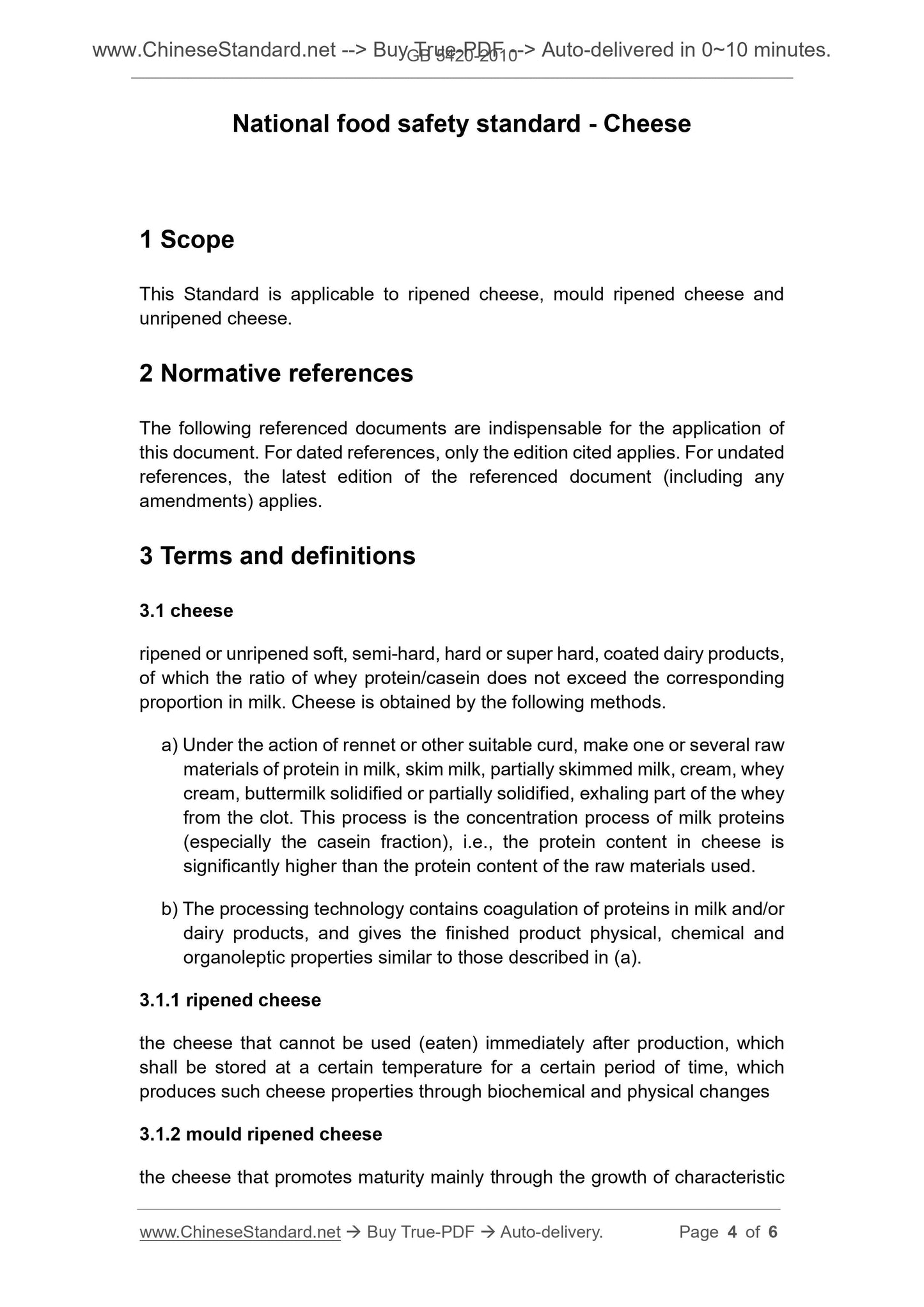1
/
of
4
PayPal, credit cards. Download editable-PDF & invoice in 1 second!
GB 5420-2010 English PDF
GB 5420-2010 English PDF
Regular price
$90.00
Regular price
Sale price
$90.00
Unit price
/
per
Shipping calculated at checkout.
Couldn't load pickup availability
GB 5420-2010: National food safety standard -- Cheese
Delivery: 9 seconds. Download (and Email) true-PDF + Invoice.Get Quotation: Click GB 5420-2010 (Self-service in 1-minute)
Newer / historical versions: GB 5420-2010
Preview True-PDF
Scope
This Standard is applicable to ripened cheese, mould ripened cheese andunripened cheese.
Basic Data
| Standard ID | GB 5420-2010 (GB5420-2010) |
| Description (Translated English) | National food safety standard -- Cheese |
| Sector / Industry | National Standard |
| Classification of Chinese Standard | C53;X16 |
| Classification of International Standard | 67.100.30 |
| Word Count Estimation | 5,581 |
| Date of Issue | 2010-03-26 |
| Date of Implementation | 2010-12-01 |
| Older Standard (superseded by this standard) | GB 5420-2003; GB/T 21375-2008 ial |
| Adopted Standard | Codex Stan 283-1978 (Revision 1999, Amendment 2006, 2008), NEQ |
| Regulation (derived from) | Circular of the Ministry of Health (2010)7 |
| Issuing agency(ies) | Ministry of Health of the People's Republic of China |
| Summary | This Chinese standard applies to mature cheeses, mold cheeses mature and immature cheese. |
Share







